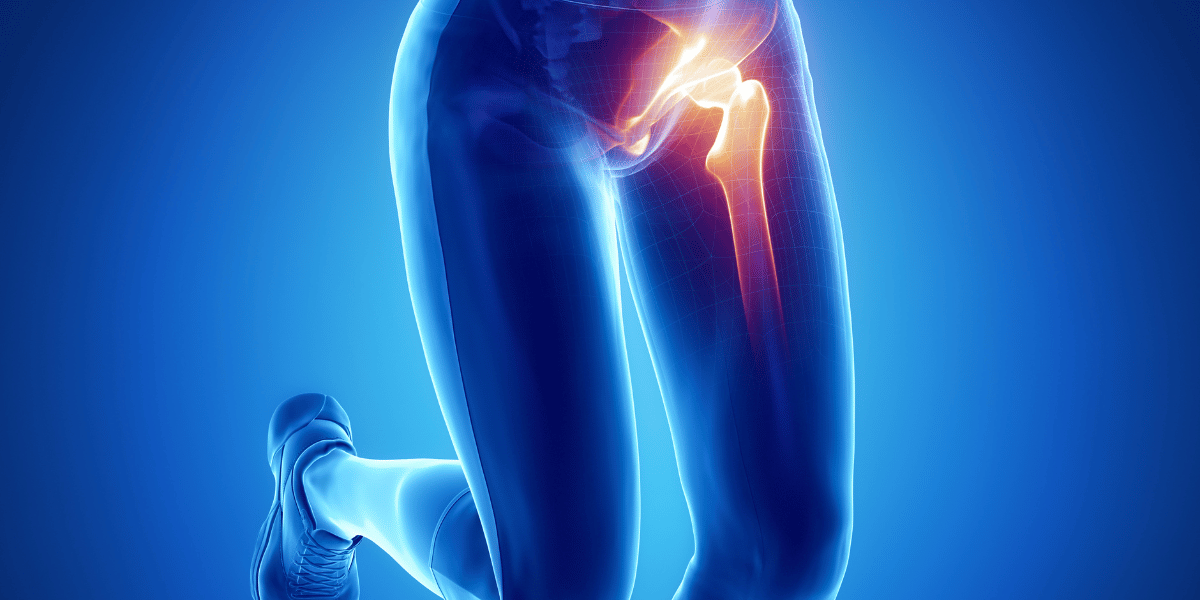
Hip tendonitis is a condition that can creep into our lives, disrupting the smooth rhythm of our daily activities. The hip, being a crucial joint for movement and stability, becomes a focal point when it’s affected by tendonitis. This condition is marked by inflammation of the tendons around the hip, causing discomfort and limiting mobility.
Imagine trying to enjoy a walk in the park or even a simple task like bending down and being met with persistent pain. Hip pain can damper everyday life, making the simplest of actions a challenge. However, there’s hope. This guide aims to shed light on hip tendonitis, its effects on daily routines, and how we can work towards finding relief.
Understanding Hip Tendonitis
Hip tendonitis occurs when the tendons around the hip joint become inflamed. Tendons are tough bands of tissue that connect muscles to bones, facilitating movement. When these tendons experience inflammation, they can lead to discomfort and pain in the hip region.
The causes of hip tendonitis usually revolve around overuse or strain on the hip tendons. This can result from repetitive movements, especially in sports or activities involving frequent hip motion. Sudden increased activity or poor muscle flexibility can also contribute to the development of hip tendonitis.
Understanding the root causes of hip tendonitis is essential for effective management and prevention. Identifying what causes this condition can reduce the risk and keep our hips healthier.
Recognizing the Symptoms
Hip tendonitis often makes its presence known through a set of distinct symptoms. Recognizing these signs can be the first step toward seeking appropriate help and relief. Here are some common indicators of hip tendonitis:
- Pain in the Hip Area: Persistent pain in the hip that may intensify during movement or specific activities.
- Tenderness: The hip area may feel tender to the touch, indicating inflammation in the tendons.
- Stiffness: Difficulty in moving the hip or experiencing stiffness, particularly after periods of inactivity.
- Swelling: Swelling around the hip joint, a visible sign of inflammation in the tendons.
- Painful Movements: Discomfort or pain during activities such as walking, running, or climbing stairs.
- Audible Clicking or Popping: Some individuals may hear clicking or popping sounds in the hip during movement.
- Limited Range of Motion: Reduced ability to move the hip through its full range of motion.
Recognizing these symptoms and promptly seeking medical attention can aid in the early diagnosis and management of hip tendonitis.

Diagnosis and Consultation
Seeking medical consultation when experiencing symptoms of hip tendonitis is a crucial step toward effective treatment. A healthcare professional can provide a thorough evaluation based on your symptoms and medical history.
During the consultation, they will:
- Conduct a Physical Examination: Assess the hip area’s range of motion, strength, and tenderness.
- Discuss Symptoms and History: Understand your symptoms, the duration of discomfort, and any specific activities that worsen the pain.
- Recommended Imaging Tests: X-rays, MRI, or ultrasound may be suggested to visualize the hip.
- Rule Out Other Conditions: Confirm that the symptoms are indeed due to hip tendonitis.
- Develop a Treatment Plan: A tailored treatment plan will be outlined, which may include rest, physical rehabilitation, etc.
Non-Invasive Treatments
Rest and Activity Modification
Rest is vital in the initial stages of managing hip tendonitis. It allows the inflamed tendons to heal and reduces stress on the hip joint. Modify your activities to avoid movements that strain the affected tendons. This can mean temporarily removing high-impact exercises or activities that exacerbate the pain.
Natural Pain Management
Our comprehensive and responsible approach to pain management utilizes regenerative medical procedures like PRP injections and trigger point injections to allow your body to heal itself.
By employing these non-invasive strategies, you can effectively manage the discomfort of hip tendonitis.
Physical Rehabilitation and Exercises
Physical rehabilitation is crucial in managing hip tendonitis by focusing on strengthening and stretching exercises. In this process, you can also enhance flexibility and muscle stability around the hip joint.
Strengthening Exercises
Strengthening exercises aim to enhance the muscles supporting the hip, improving stability and reducing strain on the tendons. These may include:
- Hip Abduction: Leg raises to the side while lying down, strengthening the muscles on the outer hip.
- Hip Flexion: Lifting the knee toward the chest while seated or lying down to target the hip flexor muscles.
- Hip Extension: Extending the leg backward while standing or lying face down, targeting the glutes and hamstrings.
Stretching Exercises
Stretching exercises focus on improving flexibility and reducing muscle tension. Some effective hip stretches include:
- Hip Flexor Stretch: Lunges or kneeling hip flexor stretches to elongate the front hip muscles.
- Hamstring Stretch: Toe-touching or seated stretches to target the back of the thighs and hips. These groups of muscles need to be attended to regularly.
- IT Band Stretch: Cross-legged or standing stretches to alleviate iliotibial (IT) band tension.
Injections and Medications
Corticosteroid Injections
Corticosteroid injections, administered directly into the inflamed tendon, can significantly relieve pain and inflammation associated with hip tendonitis. These injections deliver anti-inflammatory medication to the affected area, reducing swelling and discomfort. However, it’s essential that the relief is typically temporary, and repeated injections are generally not recommended.
Other Medications
- Nonsteroidal Anti-inflammatory Drugs (NSAIDs): Over-the-counter ibuprofen or naproxen sodium can be effective in managing pain and inflammation associated with hip tendonitis. However, a healthcare professional should monitor long-term use.
- Pain Relievers: Acetaminophen, an analgesic, can be used to alleviate pain without affecting inflammation. It’s a suitable option for those unable to tolerate NSAIDs.
Surgery Options
In cases where conservative treatments prove ineffective, surgery might be considered. Surgical options for hip tendonitis include:
- Bursectomy: Removal of the inflamed bursa sac near the hip, which can be a source of irritation.
- Tendon Repair or Release: Surgical repair or release of damaged tendons to reduce pain and restore movement.
- Arthroscopy: Minimally invasive surgery to inspect and treat issues within the hip joint, including tendon inflammation.
Advanced Pain Treatments
PRP Injection Therapy
PRP injections involve injecting a solution of a patient’s platelets into the affected area. It may aid in healing and reducing inflammation.
Extracorporeal Shock Wave Therapy (ESWT)
ESWT delivers shock waves to the affected area, promoting healing and reducing pain.
Prolotherapy
Involves injecting a solution to stimulate tissue repair, potentially benefiting those with chronic hip tendonitis.
These advanced treatments offer alternatives for individuals who haven’t found relief through conventional methods.

Preventive Measures and Lifestyle Changes
Proper Warm-up and Stretching
Before physical activity, ensure a thorough warm-up to prepare muscles and tendons for exercise. Incorporate dynamic stretching to increase flexibility and reduce the risk of injury.
Gradual Increase in Activity
Avoid sudden spikes in activity levels. Slowly increase how hard and how long you exercise to help your body get used to it and avoid hurting yourself.
Maintain a Healthy Weight
Excess weight can strain the hip and contribute to tendonitis. Maintaining a healthy weight through a balanced diet and regular exercise can alleviate this strain.
Proper Footwear and Support
Wear appropriate footwear that provides adequate support and cushioning, particularly during physical activities.
Cross-Training
Incorporate exercises into your routine to avoid overuse of muscle groups and reduce the risk of tendonitis.
Listen to Your Body
Pay attention to signs of discomfort or pain during activities. If you experience persistent pain, modify or stop the activity and seek medical advice. By integrating these preventive measures, you can reduce the development of hip tendonitis and maintain a healthy lifestyle. Pain relief is an aspect of life that we all can take for granted.
Final Thoughts
Dealing with hip tendonitis can be challenging, but remember, you’re not alone. Your determination and healthcare professionals’ guidance can pave the way to a pain-free and active life.
It’s essential to be patient with the healing process. Each step, whether through rest, exercises, or medical treatments, is a step toward relief and recovery. Listen to your body, honor its needs, and stay committed to the recommended treatment plan.
You have the strength to overcome this hurdle. With time, you’ll return to enjoying the activities you love without the burden of hip tendonitis.
Never hesitate to reach out for support, ask questions, or seek help. Your healthcare team is here to support you on this journey. Stay hopeful, stay resilient, and keep moving forward. A brighter, pain-free future awaits.
